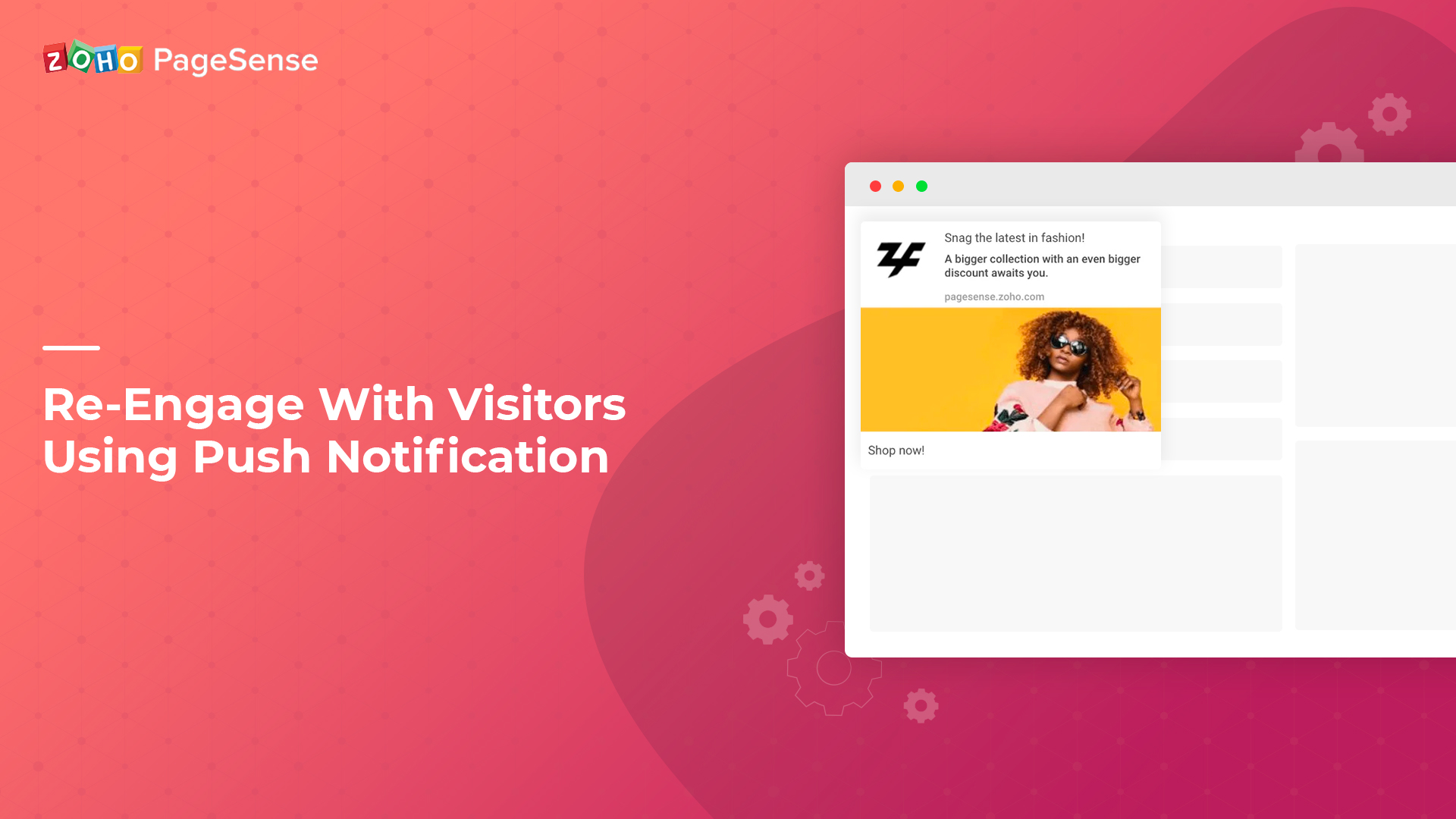
Web push notification is a marketing channel that has gained rapid attention in recent times and has proven to be quite an effective way of re-engaging with your website visitors.
Knowing how this marketing method can put you a step ahead of your competitors, we at Zoho PageSense have introduced a Push Notification feature under our Engage section.
With this, you can display targeted messages to your visitors even when they aren't on your website and nudge them further into your conversion funnel.
All you need is a single click from your visitor, consenting to receive your notifications, and you're good to go.
Why does my website need push notification?
Let's look at some reasons you should employ push notifications on your website:
Consent-driven
Your visitors get to choose if they want to receive notifications from you or not. Moreover, a conscious "Yes" adds a lot more credibility and value to your brand.
Real leads
Push notifications require opt-in permission, which ultimately translates to good quality leads. This way, you know your efforts are channelized towards real subscribers who're interested in what you have to offer.
Improved engagement
You can drive repeat traffic and keep subscribers engaged with new posts, lead magnets, and promotional content.
Time-saving
Push messages are fairly less time-consuming compared to other marketing channels. You can grow your subscriber list with a single click and without the hassle of getting your visitors to fill in huge, multi-field forms.
When do I trigger it?
PageSense lets you schedule when you want to send the notification to your subscribers. You can choose one of these following notification types:
One-time
These are single-shot, time-bound notifications that are sent only once. They could be about a flash sale, a limited-time offer, or even a product launch, and are generally aimed at creating a sense of urgency among users.

Recurring
These are simply reminder notifications that can be sent periodically to your users. They could be scheduled monthly, weekly, or even on a daily basis. They act as subtle prompts and can come in handy for ecommerce stores, gym renewals, software subscriptions, and more.

Triggered
These are automated notifications that are set off when a visitor meets a particular pre-defined criteria like downloading a white paper, signing up, or adding a product to their wish list.

What should it say?
After you choose the notification type, you can draft the message you want to display. The catch here is to ensure the content is compelling and relevant. PageSense lets you configure the title and description to suit your audience segments and also supports images, brand logos, and CTAs.

Who should it target?
Once your notification content is ready, the crucial third step is to select your target audience. So make sure you categorize your subscribers mindfully and show them relevant content based on their behavior to get the most out of your push notification campaigns.
PageSense lets you choose your target audience and customize segments based on criteria like new visitors, returning visitors, device used, location, and social traffic.

What's the ultimate aim?
Finally, pick a goal to track conversions—the action you want your visitors to perform on your website. This could be predefined goals like an element click, link click, time spent, or even custom event goals that are specific to your visitors' behaviors. Once this goal has been achieved, that visitor won't receive the same notification from your website.

How do I break down the analytics?
PageSense provides extensive reports of your push notification campaigns. You can see on which days your notifications performed the best based on impressions, clicks, conversions, and new subscribers. It breaks down your campaign analytics and tells you the time of day, devices, and countries that bring in the most engagement.
You also get a comprehensive chronicle of your subscriber details and their push statuses. Plus, with PageSense you can even filter and segment your push notification reports.

Bonus
PageSense lets you A/B test your push notifications. You can enable this option to create different versions of a push message and zero in on the one that performs the best among your audience.
Here's a detailed step-by-step guide that'll help you create push notifications using PageSense - Create and schedule your first push notification
Give this feature a spin, and let us know your thoughts in the comments below.
Read next: Collect Visitor Feedback With PageSense’s Polls
Comments